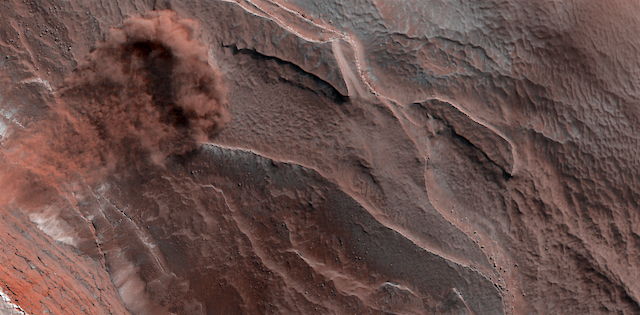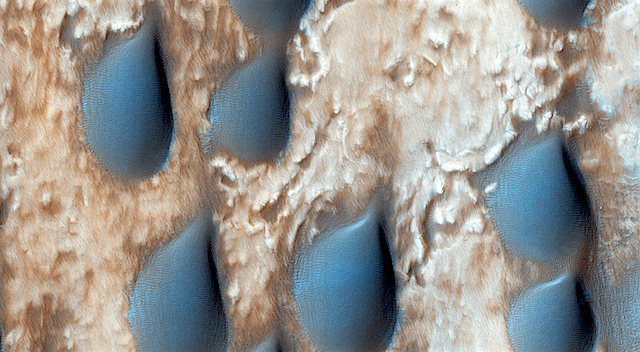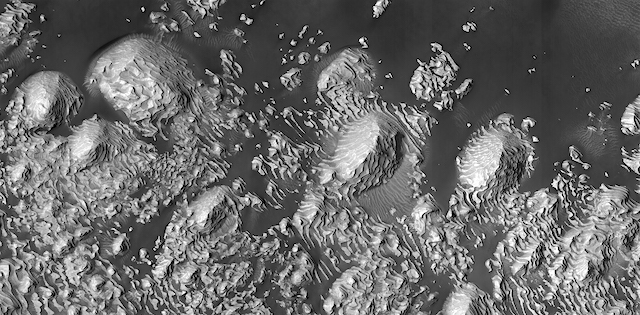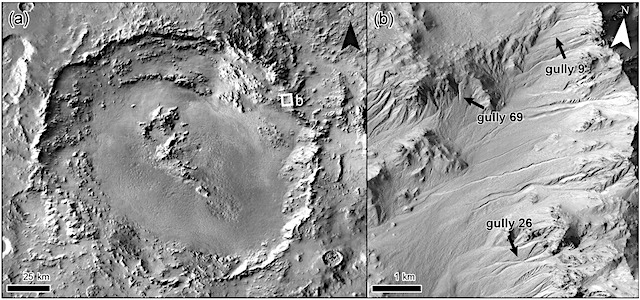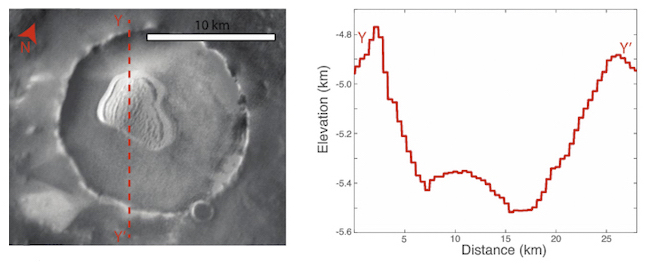 [Editor’s note: From a paper by Michael Sori and three co-authors recently published in the Journal of Geophysical Research.]
[Editor’s note: From a paper by Michael Sori and three co-authors recently published in the Journal of Geophysical Research.]
Islands of ice on Mars and Pluto
• Deposits in 31 craters in the south polar region of Mars likely represent 10,000 km3 of water ice, separate from the polar layered deposits.
• Similar outlier nitrogen ice deposits may exist in craters near Sputnik Planitia on Pluto.
• Crater topography provides a favorable location for the accumulation and/or retention of volatiles.
Mapping and quantifying ice on the surfaces of planets are of interest for a variety of reasons relating to science and exploration. Here, we identify 31 ice deposits located within craters in the south polar region of Mars, near the massive southern polar ice sheet.
These new 31 ice deposits represent an inventory of more than 10 trillion cubic meters of solid water, similar to but greater in number and volume than previously studied features near the north pole.
Similar features of nitrogen ice may exist in craters on Pluto, suggesting that craters are a favorable location for the accumulation or preservation of ices throughout the Solar System. [More at link]










